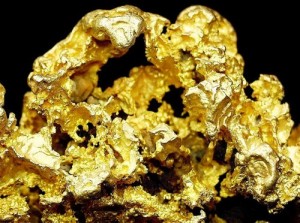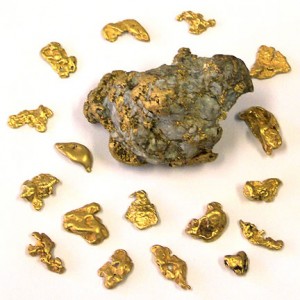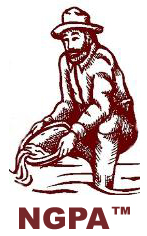The Behavior of Gold: Prospecting, Panning & Finding Gold

 Gold can be found in some places along the river, but not others. Anyone who wants to be successful at finding gold by prospecting or panning needs to understand the reasons why this happens.
Gold can be found in some places along the river, but not others. Anyone who wants to be successful at finding gold by prospecting or panning needs to understand the reasons why this happens.
The more you read, watch and listen, the more you’ll realize that the people who find the most gold . . . know the most about its nature and character. Good gold prospectors have that knowledge.
Before you can find out the source of “placer gold,” you will first need to learn about how “lode ore” is formed. As you continue to read and ask questions about how to find gold, you’ll pick out what you need to know and tuck important facts away in your mind.
It’s important to remember that rocks are NOT solid as the old saying goes: “Solid as a rock,” but that the have cracks, pores and cleavages (some so small to be seen only through a microscope), others so huge and deep they penetrate the crust of our earth (called fissures or faults).
When you understand that bit of information, you’ll be able to understand what the geologists describe: that this ancient metal poured upward from the earth’s interior (into fissures in bedrock) and formed in its present state somewhere between two and ten million years ago. That native gold (combined with a few other minerals) is found in “veins” that formed in these fissures when the molecules of molten rock separated and solidified into (mostly) mild-white “bull quartz.”
This is the “lode ore” that must be mined, milled, and separated. A “placer” is formed when nature does the “mining,” “milling,” and “separating” for us.
Whenever ore veins become exposed ( by natural erosion of surrounding soil) the bull quartz, in this case, is left uprooted and subject to the effects of the weather.
 Alternate changes from summer-heat to winter-cold cause the surface of the quartz to expand and contract and finally to fracture. Along come the early winter rains which penetrate the fractures and is caught there.
Alternate changes from summer-heat to winter-cold cause the surface of the quartz to expand and contract and finally to fracture. Along come the early winter rains which penetrate the fractures and is caught there.
As the weather turns colder, the water freezes, expands and enlarges the fractures. This process continues as periodical thaws and freezes act upon the rain-water until the quartz rock is finally broken free from the matrix rock.
Heavy spring floods start their rampages and rush down mountainsides carrying their collection of rocks down to the river. More fragmentation happens along the way as the gold-bearing quartz rolls, bounces, tumbles, and hits other rocks. This releases more of the invulnerable gold.
When these great torrents of water meet the river, the river-water becomes clogged with the burden and the current greedily takes over. Where the turbulence is greatest, the gold particles (being soft and malleable) are pounded into “”chunks,” “pellets” and “nuggets” by being caused to skip, hit, bump and bang against other rocks.
While the water is running fast, gold and heavy black sand will continue to move along with it; but wherever the current slows down and the pressure eases (at bends in the river), or when the gold meets obstacles (such as huge boulders) it will “drop out” to rest and concentrate. Being a heavy, lazy mineral, gold will follow the easiest and quickest route downstream and stop wherever convenient.
After it drops out and settles to the bottom of the river, the continuing undulation of the water overhead causes the gold to sift down through the “overburden” until it comes to rest on bedrock. Even then it will continue to slide along smooth bedrock until it becomes trapped in a pocket or crevice.

